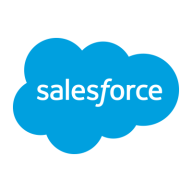

Salesforce Platform and Cloud Foundry compete in the cloud service arena. Salesforce Platform appears to hold the upper hand with its strong CRM capabilities, particularly in pricing and support, while Cloud Foundry offers valuable features that justify its pricing.
Features: Salesforce Platform provides sales automation, customer interaction tracking, and robust CRM functionalities. Cloud Foundry supports multiple languages, offers an adaptable PaaS environment, and caters to diverse development needs, making it advantageous for varied applications.
Ease of Deployment and Customer Service: Salesforce Platform emphasizes a streamlined deployment model with extensive customer support and resources including a comprehensive onboarding process. Cloud Foundry, although requiring technical expertise for deployment due to its open-source nature, offers considerable flexibility and customization.
Pricing and ROI: Salesforce Platform generally has a higher setup cost because of its extensive CRM offerings, but customers often experience rapid ROI through improved customer management. Cloud Foundry, with lower initial costs, especially benefits companies with technical expertise, providing competitive ROI through efficient application deployment. Salesforce's features justify its pricing, while Cloud Foundry delivers cost-effectiveness and adaptability for specific development needs.
| Product | Market Share (%) |
|---|---|
| Salesforce Platform | 3.2% |
| Cloud Foundry | 2.4% |
| Other | 94.4% |


| Company Size | Count |
|---|---|
| Small Business | 39 |
| Midsize Enterprise | 26 |
| Large Enterprise | 38 |
Cloud Foundry, home of the open source application development technologies CF Application Runtime and CF Container Runtime, is more than a platform. It’s a flexible way of embracing digital transformation that helps businesses evolve in the face of constant change. To put it another way, with Cloud Foundry, companies can rest assured they will have the right tool for the right job.
Salesforce Platform is a tool that provides application building with open application programming interfaces (APIs), integration tools, back-end services, starter templates, and developer environments. With a low-code interface, users are able to build applications and benefit from automated processes. The product helps customers to increase work productivity and save on IT costs through efficient, easy-to-understand, methods for creating applications.
Salesforce Platform allows companies to build and operate intelligent applications at scale and share them with employees and customers in real time. The tool secures companies' data while connecting and synchronizing it simultaneously across their Customer 360 accounts. The main components of the product are:
Salesforce Platform Features
Also referred to as a “drag and drop app builder," this solution offers various features for customers to create intelligent applications and build personalized services for clients, partners, and employees within the apps.
Salesforce Platform Benefits
The benefits of using Salesforce Platform include:
Reviews from Real Users
A vice president at a healthcare company values Salesforce Platform because it is flexible and user-friendly with helpful pre-built schemas.
Peter G., a senior technical consultant at a tech services company, rates Salesforce Platform highly because it is intuitive, quite easy to learn, and stores all kinds of relevant sales information.
We monitor all PaaS Clouds reviews to prevent fraudulent reviews and keep review quality high. We do not post reviews by company employees or direct competitors. We validate each review for authenticity via cross-reference with LinkedIn, and personal follow-up with the reviewer when necessary.